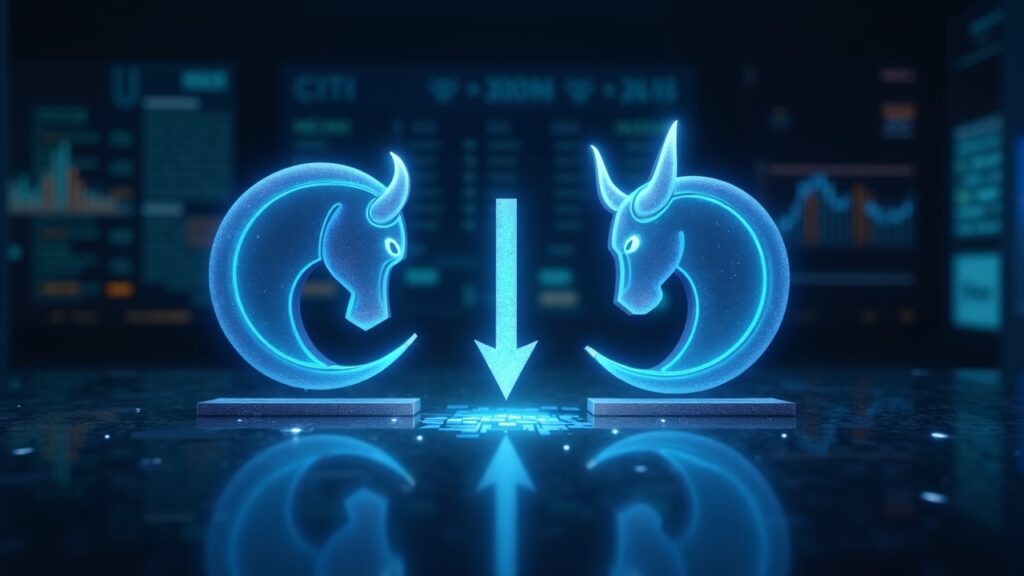Citi lowered Gemini’s expected value and raised Bullish’s, indicating the bank now expects Bullish to do better than Gemini. The revised split guides fund managers and traders to treat the two exchanges differently, affecting how risk and capital are allocated. The change was outlined in a research note from the bank.
Citi detailed the new figures in a research note. A price target is a guess at what a share or a related asset will be worth later, based on sales forecasts, profit margins and sector risk. The bank now sees a brighter path for Bullish and a dimmer one for Gemini.
When a target drops, investors often read it as slower growth or higher risk; when a target rises, they read the opposite. Prices of tokens, warrants or other instruments tied to either exchange may jump or fall, and traders who run matched bets will shift money between the two names.
Revised targets and their meaning
Citi move changes how people size up risk and where they place cash, creating a new pecking order between the two exchanges in the minds of large investors.
Liquidity and funding costs will likely diverge: if Gemini looks less appealing, fewer buyers may show up, while a stronger view on Bullish may draw more buyers. Gemini may have to pay higher interest or give up more equity in future raises, while Bullish may pay less as confidence improves.
Competitive strategy and reputation will be in focus. Gemini’s leaders will likely cut fees, add products or sign big clients to win back trust. Pension funds and hedge funds will check both exchanges for sound operations, clean books and solid licenses as they reassess exposure.
Rules still count even without new laws cited in the note. Every price target folds in the chance that a government tightens know-your-customer rules, blocks a license or limits a product, and a single new rule in the EU or the US can wipe out large chunks of expected revenue and force the bank to redo the sums.

